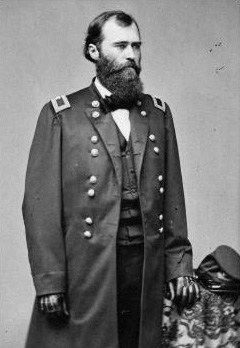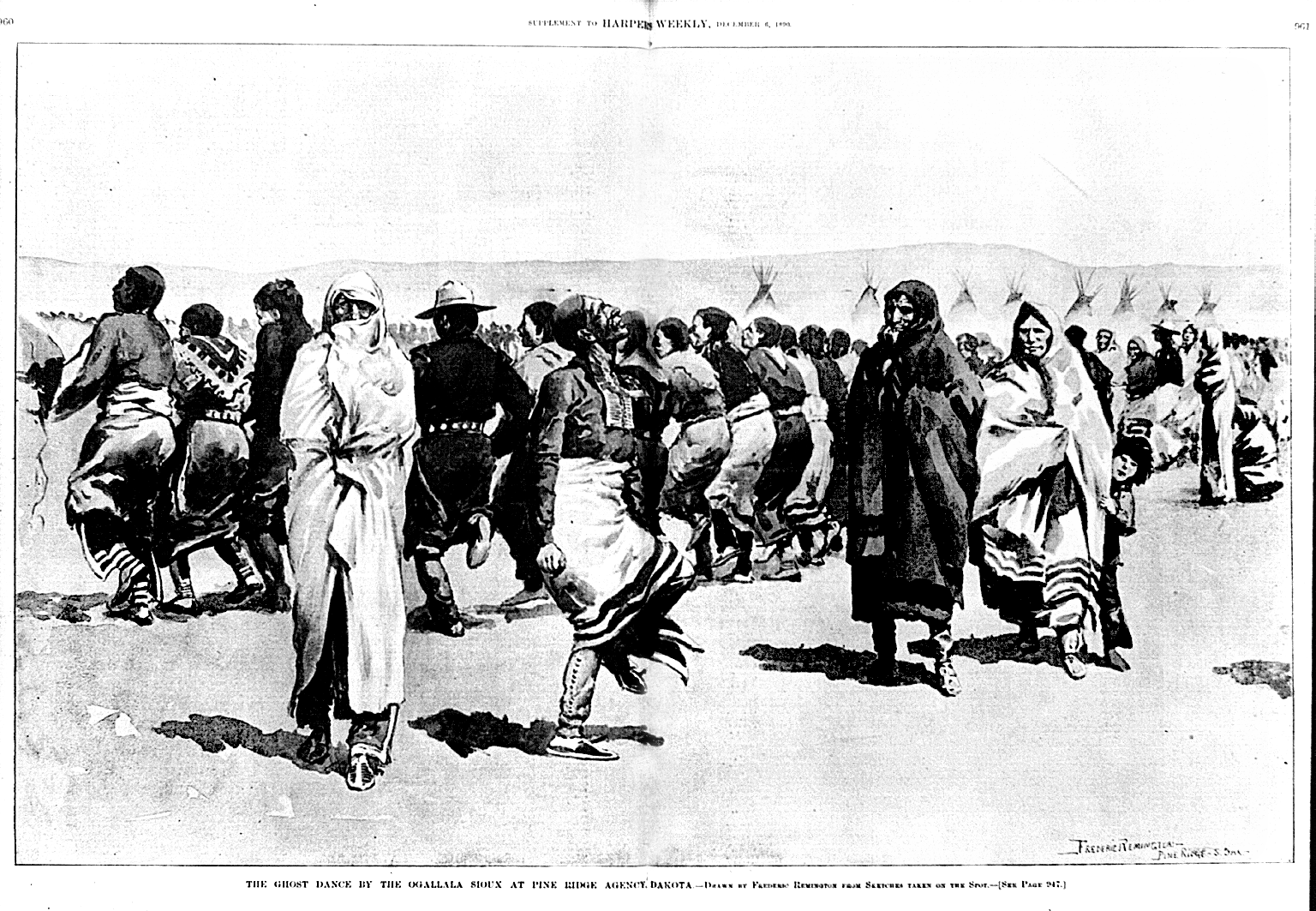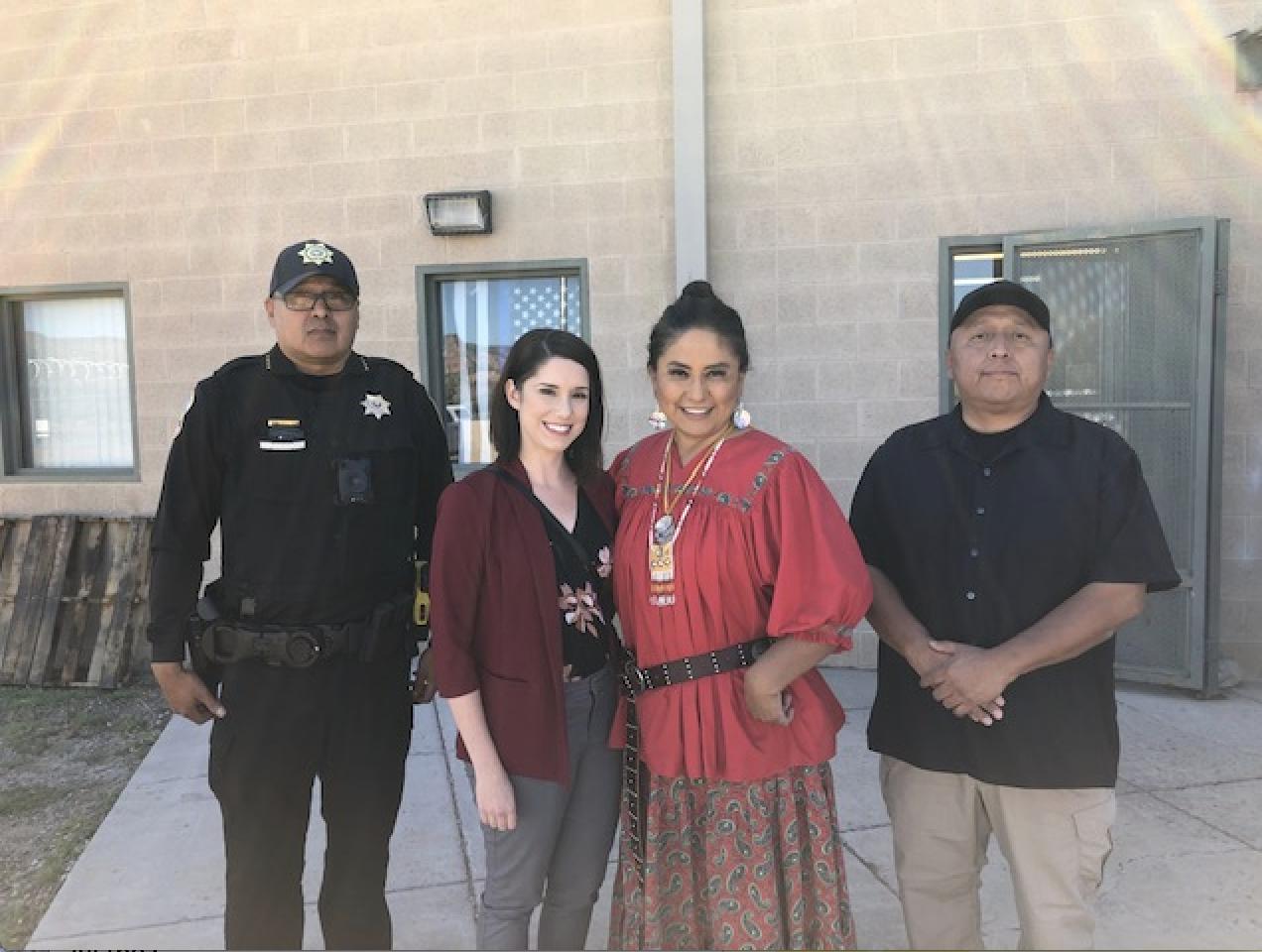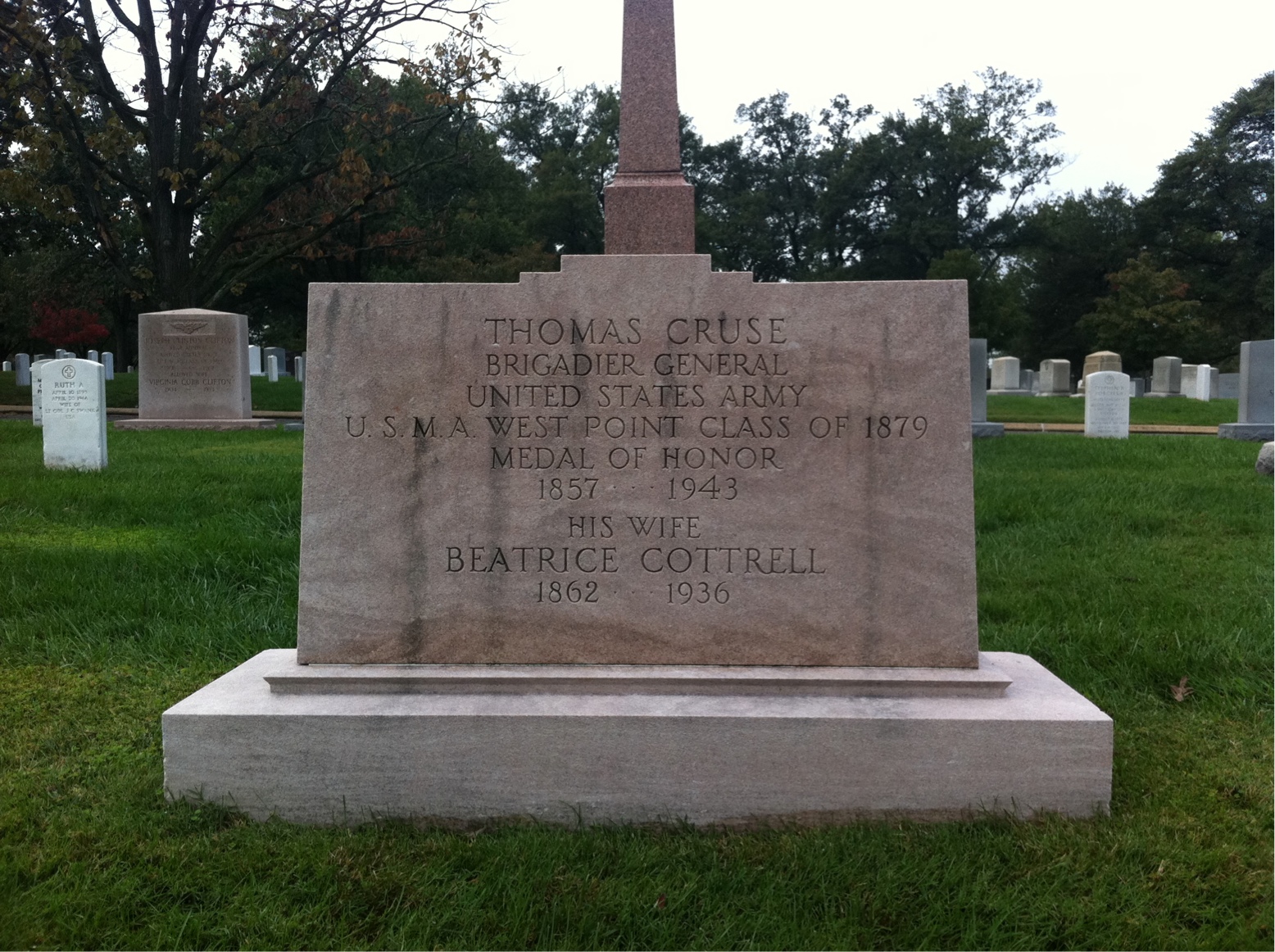|
Battle Of Cibecue Creek
The Battle of Cibecue Creek was an engagement of the Apache Wars, fought in August 1881 between the United States and White Mountain Apaches in Arizona, at Cibecue Creek on the Fort Apache Indian Reservation. After an army expedition of scouts, U.S. Army soldiers 'arrested' a prominent Cibecue Apache medicine man named Nock-ay-det-klinne. The U.S. Army soldiers were taking Nock-ay-det-klinne back to the fort when they were ambushed by Apache warriors. During the conflict, the U.S. Army soldiers killed Nock-ay-det-klinne. Most of the 23 Apache scouts mutinied, in the largest such action of its kind in U.S. history. The soldiers retreated to Fort Apache. The following day, the White Mountain Apache mounted a counter-attack. The events sparked general unrest and led to White Mountain Apache warriors leaving the Fort Apache Indian Reservation to join forces with the Apache leader of the Bedonkohe band of Chiricahua Apache named Goyahkla, better known as Geronimo. Background Nock- ... [...More Info...] [...Related Items...] OR: [Wikipedia] [Google] [Baidu] |
Apache Wars
The Apache Wars were a series of armed conflicts between the United States Army and various Apache tribal confederations fought in the southwest between 1849 and 1886, though minor hostilities continued until as late as 1924. After the Mexican–American War in 1846, the United States inherited conflicted territory from Mexico which was the home of both settlers and Apache tribes. Conflicts continued as new United States citizens came into traditional Apache lands to raise livestock and crops and to mine minerals. The U.S. Army established forts to fight Apache tribal war parties and force Apaches to move to designated Indian reservations created by the U.S. in accordance with the Indian Removal Act. Some reservations were not on the traditional areas occupied by the Apache. In 1886, the U.S. Army put over 5,000 soldiers in the field to fight, which resulted in the surrender of Geronimo and 30 of his followers. This is generally considered the end of the Apache Wars, althoug ... [...More Info...] [...Related Items...] OR: [Wikipedia] [Google] [Baidu] |
Ghost Dance
The Ghost Dance ( Caddo: Nanissáanah, also called the Ghost Dance of 1890) was a ceremony incorporated into numerous Native American belief systems. According to the teachings of the Northern Paiute spiritual leader Wovoka (renamed Jack Wilson), proper practice of the dance would reunite the living with spirits of the dead, bring the spirits to fight on their behalf, end American westward expansion, and bring peace, prosperity, and unity to Native American peoples throughout the region. The basis for the Ghost Dance is the circle dance, a traditional Native American dance. The Ghost Dance was first practiced by the Nevada Northern Paiute in 1889. The practice swept throughout much of the Western United States, quickly reaching areas of California and Oklahoma. As the Ghost Dance spread from its original source, different tribes synthesized selective aspects of the ritual with their own beliefs. The Ghost Dance was associated with Wovoka's prophecy of an end to colonial expan ... [...More Info...] [...Related Items...] OR: [Wikipedia] [Google] [Baidu] |
Wigwam
A wigwam, wickiup, wetu (Wampanoag), or wiigiwaam (Ojibwe, in syllabics: ) is a semi-permanent domed dwelling formerly used by certain Native American tribes and First Nations people and still used for ceremonial events. The term ''wickiup'' is generally used to refer to these kinds of dwellings in the Southwestern United States and Western United States and Northwest Alberta, Canada, while ''wigwam'' is usually applied to these structures in the Northeastern United States as well as Ontario and Quebec in central Canada Central Canada (french: Centre du Canada, sometimes the Central provinces) is a region consisting of Canada's two largest and most populous provinces: Ontario and Quebec. Geographically, they are not at the centre of Canada but instead overlap w .... The names can refer to many distinct types of Indigenous structures regardless of location or cultural group. The wigwam is not to be confused with the Native Plains tipi, which has a different construction, ... [...More Info...] [...Related Items...] OR: [Wikipedia] [Google] [Baidu] |
Cibecue Apache
The Western Apache live primarily in east central Arizona, in the United States. Most live within reservations. The Fort Apache Indian Reservation, San Carlos Apache Indian Reservation, Yavapai-Apache Nation, Tonto Apache, and the Fort McDowell Yavapai Nation are home to the majority of Western Apache and are the bases of their federally recognized tribes. In addition, there are numerous bands. The Western Apache bands call themselves ''Ndee (Indé)'' (“The People”). Because of dialectical differences, the Pinaleño/Pinal and Arivaipa/Aravaipa bands of the San Carlos Apache pronounce the word as ''Innee'' or Nnēē:. Language and culture The various dialects of Western Apache (which they refer to as ''Ndee biyati' / Nnee biyati'') are a form of Apachean, a branch of the Southern Athabaskan language family. The Navajo speak a related Apachean language, but the peoples separated several hundred years ago and are considered culturally distinct. Other indigenous peoples who ... [...More Info...] [...Related Items...] OR: [Wikipedia] [Google] [Baidu] |
Major (rank)
Major (commandant in certain jurisdictions) is a military rank of commissioned officer status, with corresponding ranks existing in many military forces throughout the world. When used unhyphenated and in conjunction with no other indicators, major is one rank above captain, and one rank below lieutenant colonel. It is considered the most junior of the field officer ranks. Background Majors are typically assigned as specialised executive or operations officers for battalion-sized units of 300 to 1,200 soldiers while in some nations, like Germany, majors are often in command of a company. When used in hyphenated or combined fashion, the term can also imply seniority at other levels of rank, including ''general-major'' or ''major general'', denoting a low-level general officer, and ''sergeant major'', denoting the most senior non-commissioned officer (NCO) of a military unit. The term ''major'' can also be used with a hyphen to denote the leader of a military band such as ... [...More Info...] [...Related Items...] OR: [Wikipedia] [Google] [Baidu] |
Irish People
The Irish ( ga, Muintir na hÉireann or ''Na hÉireannaigh'') are an ethnic group and nation native to the island of Ireland, who share a common history and culture. There have been humans in Ireland for about 33,000 years, and it has been continually inhabited for more than 10,000 years (see Prehistoric Ireland). For most of Ireland's recorded history, the Irish have been primarily a Gaelic people (see Gaelic Ireland). From the 9th century, small numbers of Vikings settled in Ireland, becoming the Norse-Gaels. Anglo-Normans also conquered parts of Ireland in the 12th century, while England's 16th/17th century conquest and colonisation of Ireland brought many English and Lowland Scots to parts of the island, especially the north. Today, Ireland is made up of the Republic of Ireland (officially called Ireland) and Northern Ireland (a part of the United Kingdom). The people of Northern Ireland hold various national identities including British, Irish, Northern Irish or som ... [...More Info...] [...Related Items...] OR: [Wikipedia] [Google] [Baidu] |
Dublin
Dublin (; , or ) is the capital and largest city of Republic of Ireland, Ireland. On a bay at the mouth of the River Liffey, it is in the Provinces of Ireland, province of Leinster, bordered on the south by the Dublin Mountains, a part of the Wicklow Mountains range. At the 2016 census of Ireland, 2016 census it had a population of 1,173,179, while the preliminary results of the 2022 census of Ireland, 2022 census recorded that County Dublin as a whole had a population of 1,450,701, and that the population of the Greater Dublin Area was over 2 million, or roughly 40% of the Republic of Ireland's total population. A settlement was established in the area by the Gaels during or before the 7th century, followed by the Vikings. As the Kings of Dublin, Kingdom of Dublin grew, it became Ireland's principal settlement by the 12th century Anglo-Norman invasion of Ireland. The city expanded rapidly from the 17th century and was briefly the second largest in the British Empire and sixt ... [...More Info...] [...Related Items...] OR: [Wikipedia] [Google] [Baidu] |
Colonel
Colonel (abbreviated as Col., Col or COL) is a senior military officer rank used in many countries. It is also used in some police forces and paramilitary organizations. In the 17th, 18th and 19th centuries, a colonel was typically in charge of a regiment in an army. Modern usage varies greatly, and in some cases, the term is used as an honorific title that may have no direct relationship to military service. The rank of colonel is typically above the rank of lieutenant colonel. The rank above colonel is typically called brigadier, brigade general or brigadier general. In some smaller military forces, such as those of Monaco or the Vatican, colonel is the highest rank. Equivalent naval ranks may be called captain or ship-of-the-line captain. In the Commonwealth's air force ranking system, the equivalent rank is group captain. History and origins By the end of the late medieval period, a group of "companies" was referred to as a "column" of an army. According to Raymond Ol ... [...More Info...] [...Related Items...] OR: [Wikipedia] [Google] [Baidu] |
Thomas Cruse
Thomas Cruse (December 29, 1857 – June 8, 1943) was a brigadier general in the United States Army who was a recipient of the Medal of Honor for valor in action on July 17, 1882, at the Battle of Big Dry Wash, Arizona. An 1879 graduate of West Point, he served in numerous campaigns on the Western Frontier and later in the Philippines. He retired as a brigadier general in 1918. Education and military career Cruse was born in Owensboro, Kentucky on December 29, 1857. Before attending West Point, he attended Centre College in Kentucky from 1874 to 1875. He then began attendance at the United States Military Academy, from which he graduated in 1879. Cruse was commissioned a second lieutenant in the 6th United States Cavalry upon graduation. Cruse was an honor graduate of the Infantry and Cavalry School in 1891. On July 12, 1892, he received the Medal of Honor "for distinguished gallantry in action with hostile Indians" at Big Dry Fork, Arizona on July 17, 1882. Three others ... [...More Info...] [...Related Items...] OR: [Wikipedia] [Google] [Baidu] |
Second Lieutenant
Second lieutenant is a junior commissioned officer military rank in many armed forces, comparable to NATO OF-1 rank. Australia The rank of second lieutenant existed in the military forces of the Australian colonies and Australian Army until 1986. In the colonial forces, which closely followed the practices of the British military, the rank of second lieutenant began to replace ranks such as ensign and cornet from 1871. New appointments to the rank of second lieutenant ceased in the regular army in 1986. Immediately prior to this change, the rank had been effectively reserved for new graduates from the Officer Cadet School, Portsea which closed in 1985. (Graduates of the Australian Defence Force Academy (ADFA) and the Royal Military College, Duntroon (RMC-D) are commissioned as lieutenants.). The rank of second lieutenant is only appointed to officers in special appointments such as training institutions, university regiments and while under probation during training. Trai ... [...More Info...] [...Related Items...] OR: [Wikipedia] [Google] [Baidu] |





